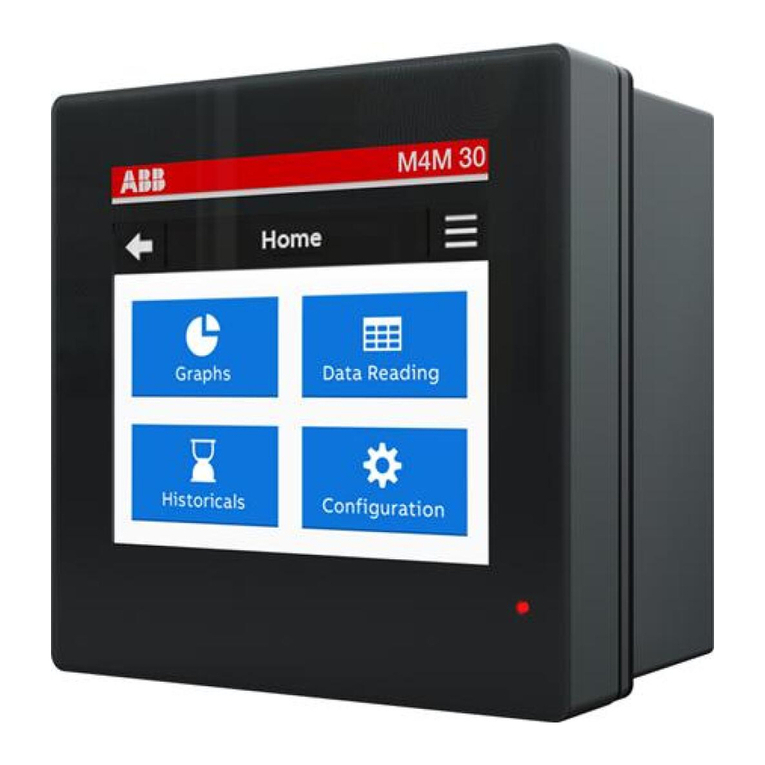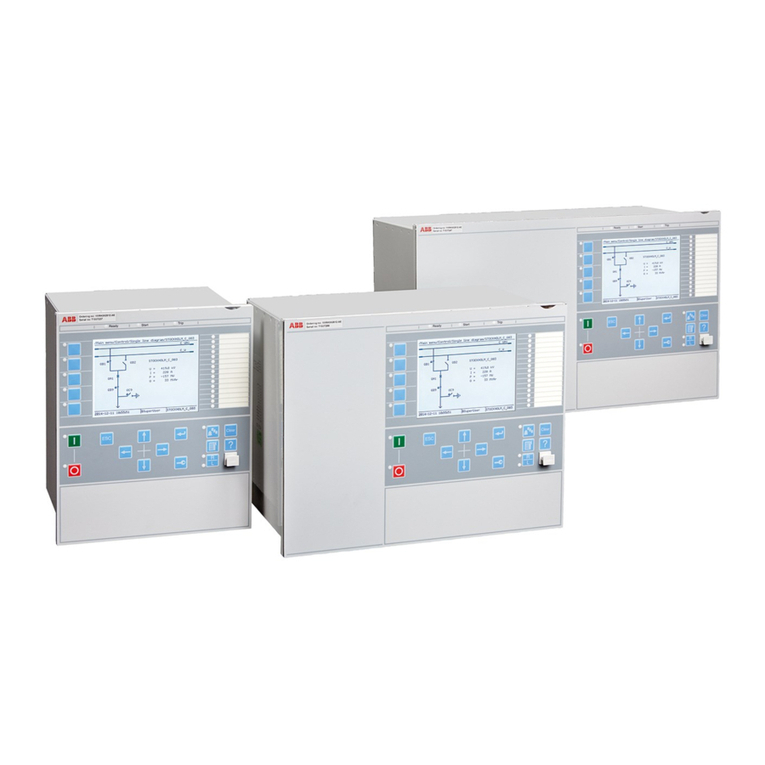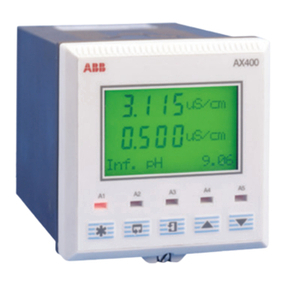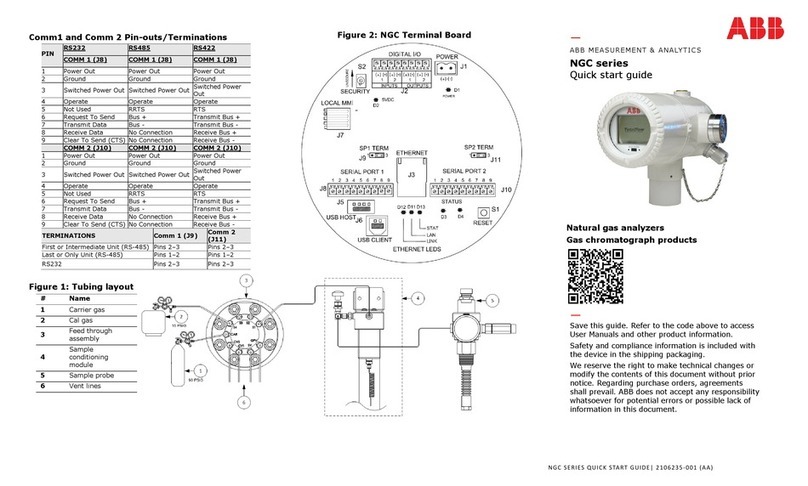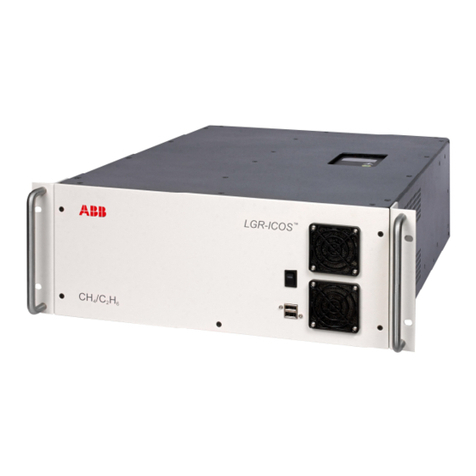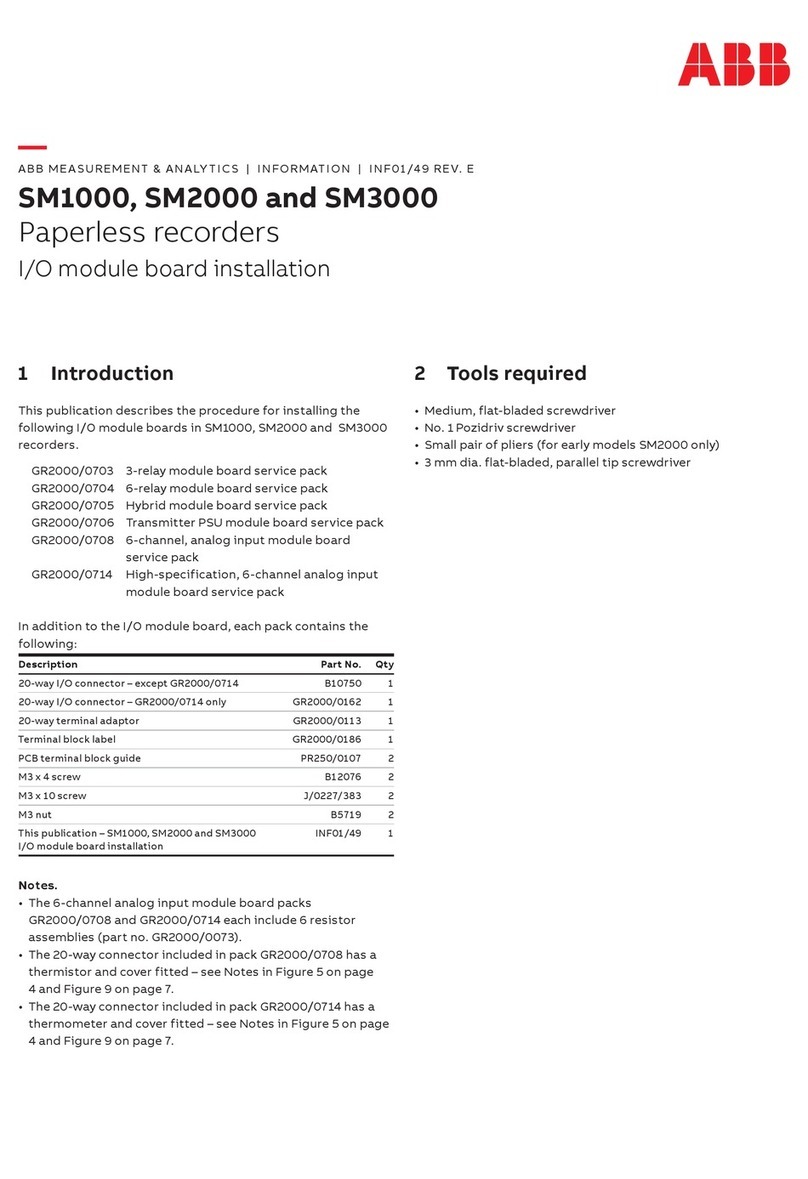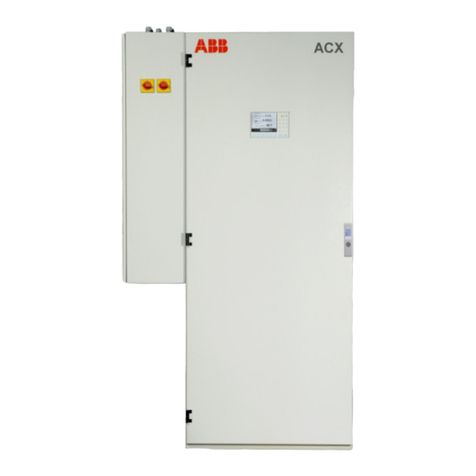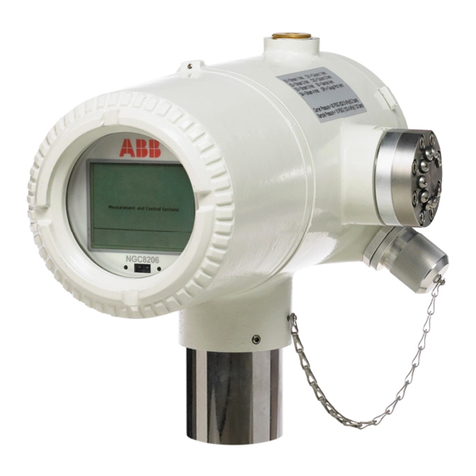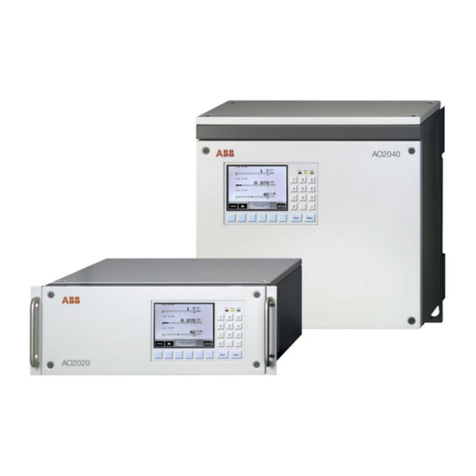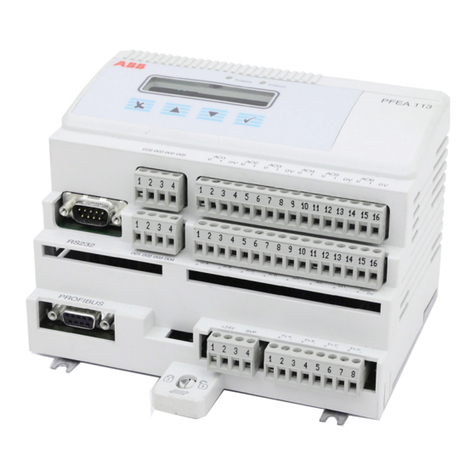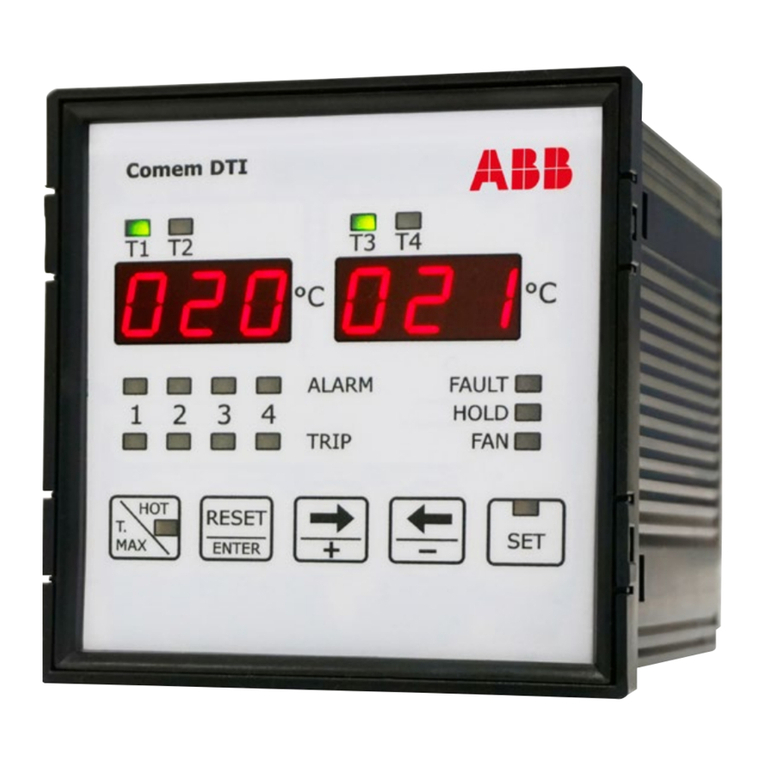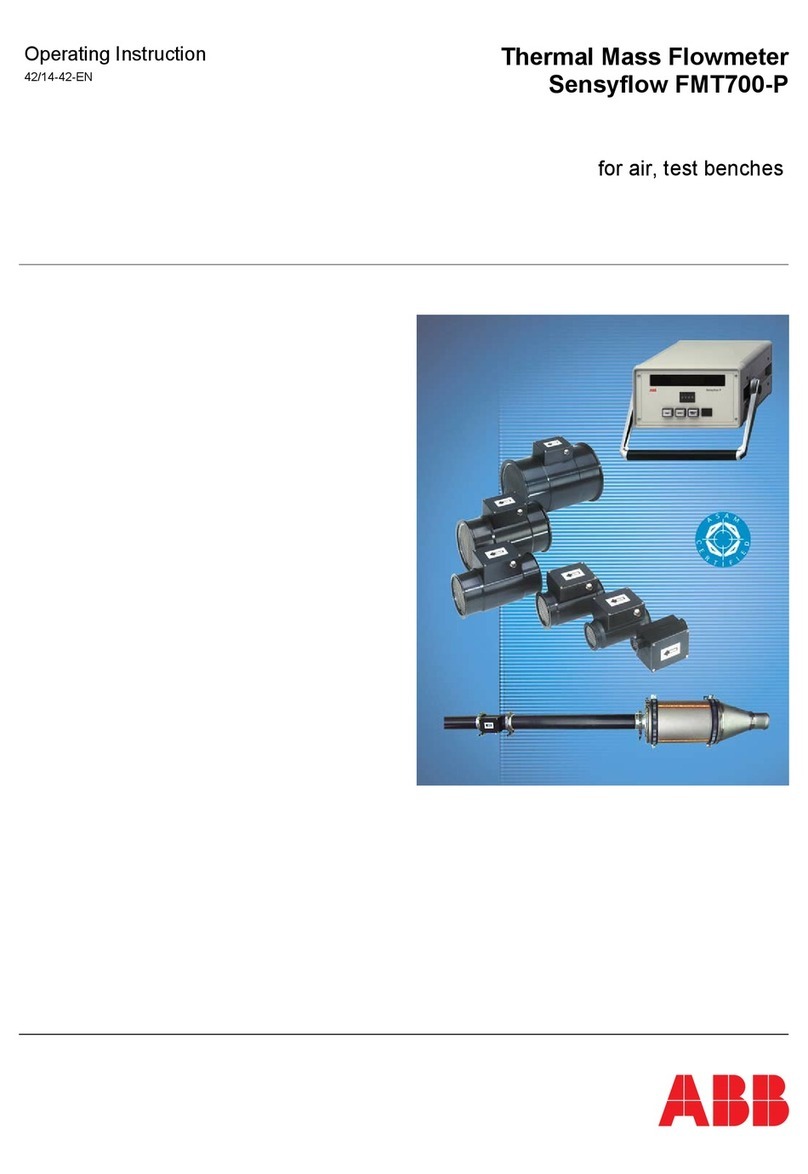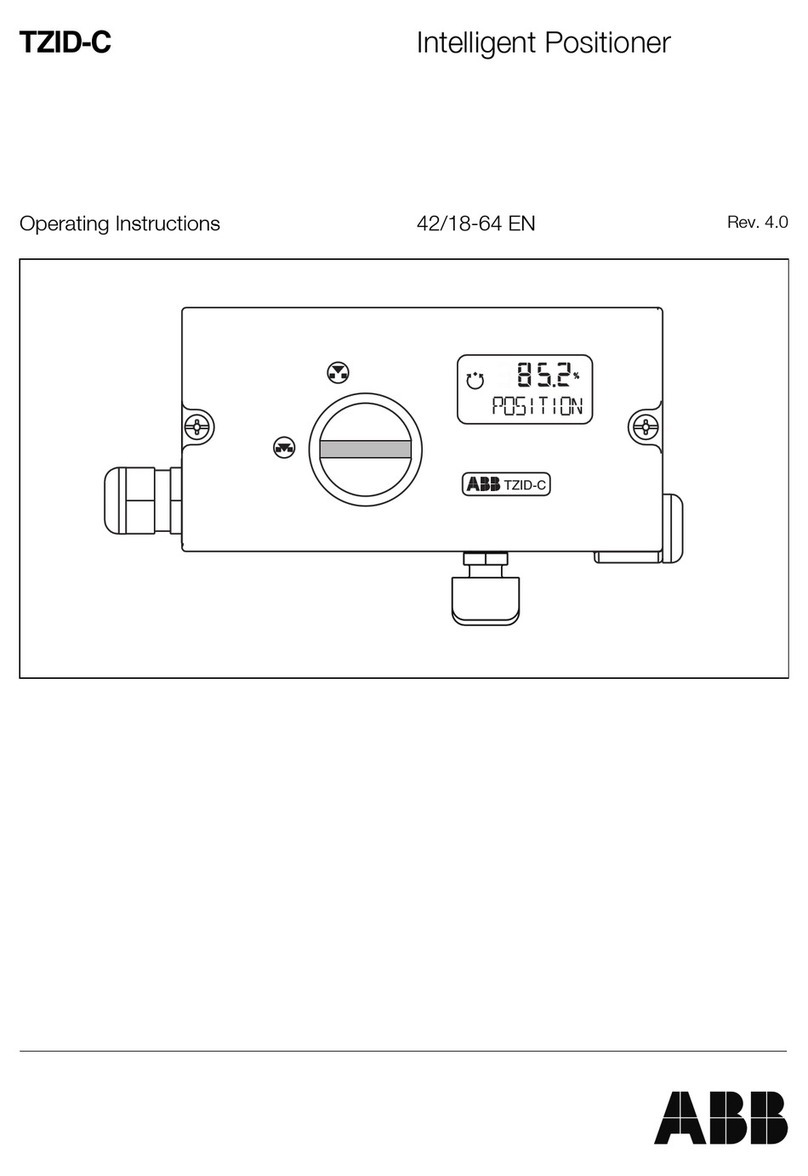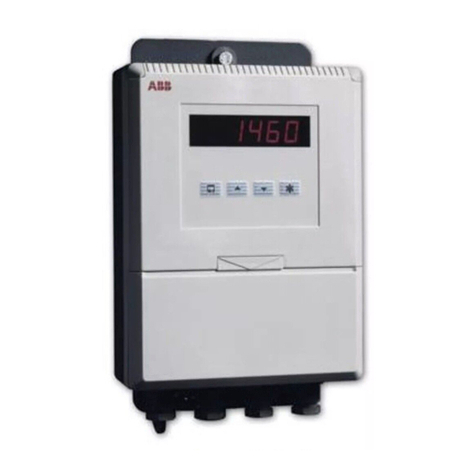
1
CONTENTS
1TURBIDITY MEASUREMENT SYSTEMS .................... 2
1.1 Introduction ........................................................ 2
1.2 Turbidity Measurement Systems ........................ 3
2MECHANICAL INSTALLATION .................................... 5
2.1 Siting Requirements ........................................... 5
2.1.1 Analyzer ................................................ 5
2.1.2 Sensor Unit (Models 7997 200 Series
and 7997 300 only) ............................... 5
2.2 Mounting the Transmitter Unit ............................ 6
2.2.1 Wall-mounted Instrument ..................... 6
2.2.2 Panel-mounted Instrument ................... 7
2.3 Installing the Turbidity Sensor Unit...................... 8
2.3.1 7997 201 and 7997 202 ....................... 9
2.3.2 7997 200 Series and 7997 300 ............ 9
2.3.3 7997 400 Series ................................... 9
2.3.4 7997 450 Series ................................... 9
2.3.5 Flow Unit Dimensions ........................... 9
2.3.6 Mounting the Sensor ............................ 9
2.3.7 Mounting the De-bubbler .................... 11
2.3.8 Set Up Procedure for
Optional De-bubbler ........................... 11
3ELECTRICAL CONNECTIONS ................................ 12
3.1 Access to Terminals ......................................... 12
3.1.1 Wall-mounted Instrument ................... 12
3.1.2 Panel-mounted Instrument ................. 12
3.2 Connections, General ....................................... 13
3.2.1 Relay Contact Protection and
Interference Suppression .................... 13
3.3 Wall-mounted Instrument Connections ............ 14
3.4 Panel-Mounted Instrument Connections .......... 15
3.5 Selecting the Mains Voltage ............................. 16
3.5.1 Wall-mounted Instrument ................... 16
3.5.2 Panel-mounted Instrument ................. 16
3.6 Turbidity Unit Connection Box .......................... 17
3.7 Connections for 7997 450 Series ..................... 17
4CONTROLS AND DISPLAYS ..................................... 18
4.1 Displays ............................................................ 18
4.2 Control Familiarization ...................................... 18
5START UP AND OPERATION .................................... 19
5.1 Instrument Start-up .......................................... 19
5.2 Operation – Turbidity Measurement Mode........ 19
5.2.1 Operating Page .................................. 19
5.2.2 Calibration Page ................................. 20
6PROGRAMMING & ELECTRICAL CALIBRATION .... 22
6.1 Access to Secure Parameters .......................... 23
6.2 Language Page ................................................ 23
6.3 Set Up Parameter Page ................................... 23
6.4 Set Up Outputs Page ....................................... 25
6.5 Electrical Calibration ......................................... 27
6.5.1 Equipment Required ........................... 27
6.6 Preparation ....................................................... 27
6.7 Electrical Calibration Page ................................ 28
7MAINTENANCE .......................................................... 29
7.1 Scheduled Maintenance ................................... 29
7.1.1 Sensor Cleaning ................................. 29
7.1.2 Calibration .......................................... 29
7.1.3 Using Dry Calibration Standards ......... 29
7.2 Calibration Checks ........................................... 30
7.2.1 Procedure ........................................... 30
7.3 Using Formazine Standard Solution ................. 32
7.3.1 Preparing the Formazine Standard
for Wet Calibration .............................. 32
7.4 Unscheduled Maintenance ............................... 33
7.4.1 Transmitter Diagnostic messages ....... 33
7.4.2 Unstable or Erratic Readings .............. 33
7.4.3 Intermittent Short Term Spikes
in Turbidity Readings .......................... 34
7.4.4 Care and Maintenance
of Dry Calibration Standards ............... 34
7.4.5 Determination of the Dry Standard
Value for the 7997 300 and
400 Series Sensors ............................ 34
7.4.6 Converting 7997 202 Sensor
to 7997 201 Sensor
(with Integral Cleaning) ........................ 34
8SPECIFICATION ......................................................... 35
9SPARES ...................................................................... 38
9.1 Model 7997 200 Series .................................... 38
9.2 Model 7997 300 ............................................... 38
9.3 Model 7997 400 Series .................................... 39
9.4 Calibration Standards ....................................... 39
9.5 De-bubbler ....................................................... 39
APPENDIX A ....................................................................... 40
A1 Principle of Operation ....................................... 40
A1.1 Nephelometric .................................... 40
A1.2 Absorption .......................................... 40
A1.3 Calibration .......................................... 40
APPENDIX B ....................................................................... 41
B1 Determination of the Correction Factor ............ 41
B1.1 Definition ............................................. 41
B1.2 Method ............................................... 41
APPENDIX C ....................................................................... 42
C1 7997 100 Sensors ............................................ 42
C1.1 Description ......................................... 42
C1.2 Flow Unit Dimensions ......................... 42
C1.3 Wall-mounted Instrument
Connections ....................................... 43
C1.4 Panel-mounted Instrument
Connections ....................................... 44
C1.5 Turbidity Unit Connection Box ............ 45
C1.6 Maintenance ....................................... 46
C1.7 Spares ................................................ 46
C1.8 Specification ....................................... 46

